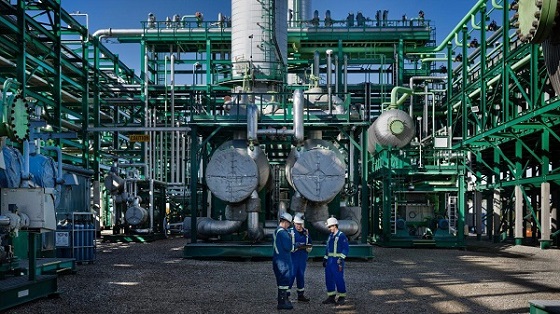Energy
Indigenous-led Projects Hold Key To Canada’s Energy Future

From the Frontier Centre for Public Policy
Indigenous leaders call for policy reforms and Indigenous equity ownership to unlock Canada’s energy potential
A surprising twist in Canada’s pipeline debate emerged on Jan. 21, 2025, when Alberta Premier Danielle Smith called for a revival of the Northern Gateway pipeline.
Unexpectedly, Grand Chief Stewart Phillip, president of the Union of B.C. Indian Chiefs, voiced support, warning that if Canada doesn’t act, Donald Trump will. Yet just a day later, Phillip abruptly retracted his statement, raising fresh questions about external influence and the future of Indigenous participation in energy development.
Northern Gateway, a pipeline once proposed to carry Alberta oilsands crude to the B.C. coast for export to Asia, was cancelled in 2016 after years of environmental opposition and legal challenges. Its demise became a symbol of Canada’s broader struggles to balance resource development, environmental concerns and Indigenous rights. Now, amid rising global energy demand and growing Indigenous interest in ownership stakes, calls to revive the project are resurfacing, with political, legal and economic implications.
Adding to the intrigue, Phillip has long been a vocal critic of major resource projects, including Northern Gateway, making his initial endorsement all the more surprising.
Some observers, like Calvin Helin, a member of the Tsimshian Nation and principal at INDsight Advisers, see deeper forces at work. A lawyer specializing in commercial and Indigenous law and a best-selling author, Helin believes the incident highlights how environmental activists are shaping the conversation.
“Environmental groups have infiltrated some Indigenous organizations,” Helin said in an interview. “They managed to support a government that championed their agendas, particularly Alberta-focused objectives like the coastal pipeline ban and changes to the regulatory approval system. In this era of Trump, all they’ve managed to do is weaken Canada’s position.”
Nonetheless, Helin emphasized that the energy industry has learned the importance of genuine engagement with Indigenous interests. He pointed out that Indigenous leaders increasingly support responsible natural resource development. Inclusion and recognition from the outset, Helin argued, are essential for energy projects in 2025 and beyond.
After the cancellation of Northern Gateway, Indigenous leader Dale Swampy, who helped establish the Northern Gateway Aboriginal Equity Partners, formed the National Coalition of Chiefs, a pro-development alliance of First Nation chiefs advocating for oil and gas development in their communities.
Swampy continues to champion the idea of a pipeline dedicated solely to moving bitumen to the coast, arguing that Canada has been “putting all its eggs in one basket” by selling almost exclusively to the United States while competitors, including the U.S. itself, have entered global markets.
According to the Canadian Energy Centre, global demand for oil and gas in emerging and developing economies is expected to remain robust through 2050. With the added pressures of U.S. tariffs, conversations about Canadian pipelines to tidewater have gained urgency. Swampy advocates for a policy reset and the revival of Northern Gateway, this time powered by Indigenous equity investment.
“First, we’ve got to get rid of the oil tanker ban (Bill C-48),” Swampy said. “We need more fluid regulatory processes so we can build projects on a reasonable timeline, without costing us billions more waiting for approvals—like TMX (Trans Mountain Expansion Project). And you’ve got to get the proponents back to the table. Last time, 31 of the 40 communities were already signed on. I believe we can get them on board again.”
Swampy continues to work with industry partners to develop an Indigenous-led bitumen pipeline to the West Coast. “We can get this project built if it’s led by First Nations.”
He also noted that other Indigenous leaders are increasingly recognizing the benefits of collaborating on resource development, whether in mining or B.C. LNG projects, which he says enjoy widespread First Nations support.
Discussions with Helin, Swampy and other Indigenous leaders resulted in the following policy recommendations for 2025 and beyond.
- Repeal Bill C-69, the Impact Assessment Act. It blocks not only pipelines but also mines, refineries, export plants and other energy infrastructure in which First Nations want to invest. The Supreme Court of Canada ruled it unconstitutional on Oct. 13, 2023.
- Cut taxes to offset U.S. tariffs. Reducing taxes on investment and energy projects can neutralize tariff impacts and attract new investment. Eliminate the carbon tax, which Indigenous leaders argue has placed Canada at a strategic disadvantage globally.
- Repeal Bill C-59, the so-called greenwashing bill. According to Stephen Buffalo, president and chief executive officer of the Indian Resource Council of Canada, this legislation has silenced many voices within the Indigenous energy community.
- Approve LNG plants and related infrastructure. Canada currently sells gas exports almost exclusively to the United States, but there’s a strong business case for expanding to Asian and European markets. In a recent Canadian Energy Ventures webcast, it was revealed that LNG sold to Europe fetches up to 16 times the price Canada receives from U.S. sales. First Nations are already successfully involved in Woodfibre LNG, Cedar LNG and Ksi Lisims LNG in B.C.
- Cut regulatory delays. Prolonged approval timelines erode investor confidence. Streamlining processes can help projects proceed in reasonable timeframes.
Finally, clarify reconciliation guidelines. Clearly define what constitutes meaningful consultation. Industry must treat Indigenous peoples as true partners, advancing economic reconciliation through equity partnerships.
A social media stir over Northern Gateway has reignited debate over Indigenous ownership in Canada’s energy future. While some leaders waver, others like Helin and Swampy make a compelling case: Indigenous-led projects are crucial for Canada’s economic and energy security. Their message is clear — repeal restrictive policies, accelerate project approvals and embrace Indigenous equity. If Ottawa removes the roadblocks, Canada can unlock its full energy potential.
Maureen McCall is an energy business analyst and Fellow at the Frontier Center for Public Policy. She writes on energy issues for EnergyNow and the BOE Report. She has 20 years of experience as a business analyst for national and international energy companies in Canada.
Daily Caller
Blackouts Coming If America Continues With Biden-Era Green Frenzy, Trump Admin Warns


From the Daily Caller News Foundation
By Audrey Streb
The Department of Energy (DOE) released a new report Monday warning of impending blackouts if the United States continues to shutter power plants without adequately replacing retiring capacity.
DOE warned in its Monday report that blackouts could increase by 100% by 2030 if the U.S. continues to retire power plants without sufficient replacements, and that the electricity grid is not prepared to meet the demand of power-hungry data centers in the years to come without more reliable generation coming online quickly. The report specifically highlighted wind and solar, two resources pushed by Biden, as responsible for eroding grid stability and advised that dispatchable generation from sources like coal, oil, gas and nuclear are necessary to meet the anticipated U.S. power demand.
“This report affirms what we already know: The United States cannot afford to continue down the unstable and dangerous path of energy subtraction previous leaders pursued, forcing the closure of baseload power sources like coal and natural gas,” DOE Secretary Chris Wright said. “In the coming years, America’s reindustrialization and the AI race will require a significantly larger supply of around-the-clock, reliable, and uninterrupted power. President Trump’s administration is committed to advancing a strategy of energy addition, and supporting all forms of energy that are affordable, reliable, and secure. If we are going to keep the lights on, win the AI race, and keep electricity prices from skyrocketing, the United States must unleash American energy.”
Dear Readers:
As a nonprofit, we are dependent on the generosity of our readers.
Please consider making a small donation of any amount here.
Thank you!
All regional grid systems across the U.S. are expected to lose reliability in the coming years without the addition of more reliable power, according to the DOE’s report. The U.S. will need an additional 100 gigawatts of new peak hour supply by 2030, with data centers projected to require as much as half of this electricity, the report estimates; for reference, one gigawatt is enough to power up to one million homes.
President Donald Trump declared a national energy emergency on his first day back in the Oval Office and signed an executive order on April 8 ordering DOE to review and identify at-risk regions of the electrical grid, which the report released Monday does. In contrast, former President Joe Biden cracked down on conventional power sources like coal with stringent regulations while unleashing a gusher of subsidies for green energy developments.
Electricity demand is projected to hit a record high in the next several years, surging 25% by 2030, according to Energy Information Administration (EIA) data and a recent ICF International report. Demand was essentially static for the last several years, and skyrocketing U.S. power demand presents an “urgent need” for electricity resources, according to the North American Electric Reliability Corporation (NERC), a major grid watchdog.
Wright has also issued several emergency orders to major grid operators since April. New Orleans experienced blackouts just two days after Wright issued an emergency order on May 23 to the Midcontinent Independent System Operator (MISO), the regional grid operator covering the New Orleans area.
Alberta
Cross-Canada NGL corridor will stretch from B.C. to Ontario

Keyera Corp.’s natural gas liquids facilities in Fort Saskatchewan. Photo courtesy Keyera Corp.
From the Canadian Energy Centre
By Will Gibson
Keyera ‘Canadianizes’ natural gas liquids with $5.15 billion acquisition
Sarnia, Ont., which sits on the southern tip of Lake Huron and peers across the St. Clair River to Michigan, is a crucial energy hub for much of the eastern half of Canada and parts of the United States.
With more than 60 industrial facilities including refineries and chemical plants that produce everything from petroleum, resins, synthetic rubber, plastics, lubricants, paint, cosmetics and food additives in the southwestern Ontario city, Mayor Mike Bradley admits the ongoing dialogue about tariffs with Canada’s southern neighbour hits close to home.
So Bradley welcomed the announcement that Calgary-based Keyera Corp. will acquire the majority of Plains American Pipelines LLP’s Canadian natural gas liquids (NGL) business, creating a cross-Canada NGL corridor that includes a storage hub in Sarnia.
“As a border city, we’ve been on the frontline of the tariff wars, so we support anything that helps enhance Canadian sovereignty and jobs,” says the long-time mayor, who was first elected in 1988.
The assets in Sarnia are a key piece of the $5.15 billion transaction, which will connect natural gas liquids from the growing Montney and Duvernay plays in B.C. and Alberta to markets in central Canada and the eastern U.S. seaboard.
NGLs are hydrocarbons found within natural gas streams including ethane, propane and pentanes. They are important energy sources and used to produce a wide range of everyday items, from plastics and clothing to fuels.
Keyera CEO Dean Setoguchi cast the proposed acquisition as an act of repatriation.
“This transaction brings key NGL infrastructure under Canadian ownership, enhancing domestic energy capabilities and reinforcing Canada’s economic resilience by keeping value and decision-making closer to home,” Setoguchi told analysts in a June 17 call.
“Plains’ portfolio forms a fully integrated cross Canada NGL system connecting Western Canada supply to key demand centres across the Prairie provinces, Ontario and eastern U.S.,” he said.
“The system includes strategic hubs like Empress, Fort Saskatchewan and Sarnia – which provide a reliable source of Canadian NGL supply to extensive fractionation, storage, pipeline and logistics infrastructure.”
Martin King, RBN Energy’s managing director of North America Energy Market Analysis, sees Keyera’s ability to “Canadianize” its NGL infrastructure as improving the company’s growth prospects.
“It allows them to tap into the Duvernay and Montney, which are the fastest growing NGL plays in North America and gives them some key assets throughout the country,” said the Calgary-based analyst.
“The crown assets are probably the straddle plants in Empress, which help strip out the butane, ethane and other liquids for condensate. It also positions them well to serve the eastern half of the country.”
And that’s something welcomed in Sarnia.
“Having a Canadian source for natural gas would be our preference so we see Keyera’s acquisition as strengthening our region as an energy hub,” Bradley said.
“We are optimistic this will be good for our region in the long run.”
The acquisition is expected to close in the first quarter of 2026, pending regulatory approvals.
Meanwhile, the governments of Ontario and Alberta are joining forces to strengthen the economies of both regions, and the country, by advancing major infrastructure projects including pipelines, ports and rail.
A joint feasibility study is expected this year on how to move major private sector-led investments forward.
-

 COVID-1921 hours ago
COVID-1921 hours agoFDA requires new warning on mRNA COVID shots due to heart damage in young men
-

 Business19 hours ago
Business19 hours agoCarney’s new agenda faces old Canadian problems
-

 Daily Caller16 hours ago
Daily Caller16 hours agoBlackouts Coming If America Continues With Biden-Era Green Frenzy, Trump Admin Warns
-

 Indigenous20 hours ago
Indigenous20 hours agoInternal emails show Canadian gov’t doubted ‘mass graves’ narrative but went along with it
-

 Bruce Dowbiggin22 hours ago
Bruce Dowbiggin22 hours agoEau Canada! Join Us In An Inclusive New National Anthem
-

 Business2 days ago
Business2 days agoCBC six-figure salaries soar
-

 Business2 days ago
Business2 days agoTrump slaps Brazil with tariffs over social media censorship
-

 Crime2 days ago
Crime2 days agoSweeping Boston Indictment Points to Vast Chinese Narco-Smuggling and Illegal Alien Labor Plot via Mexican Border



